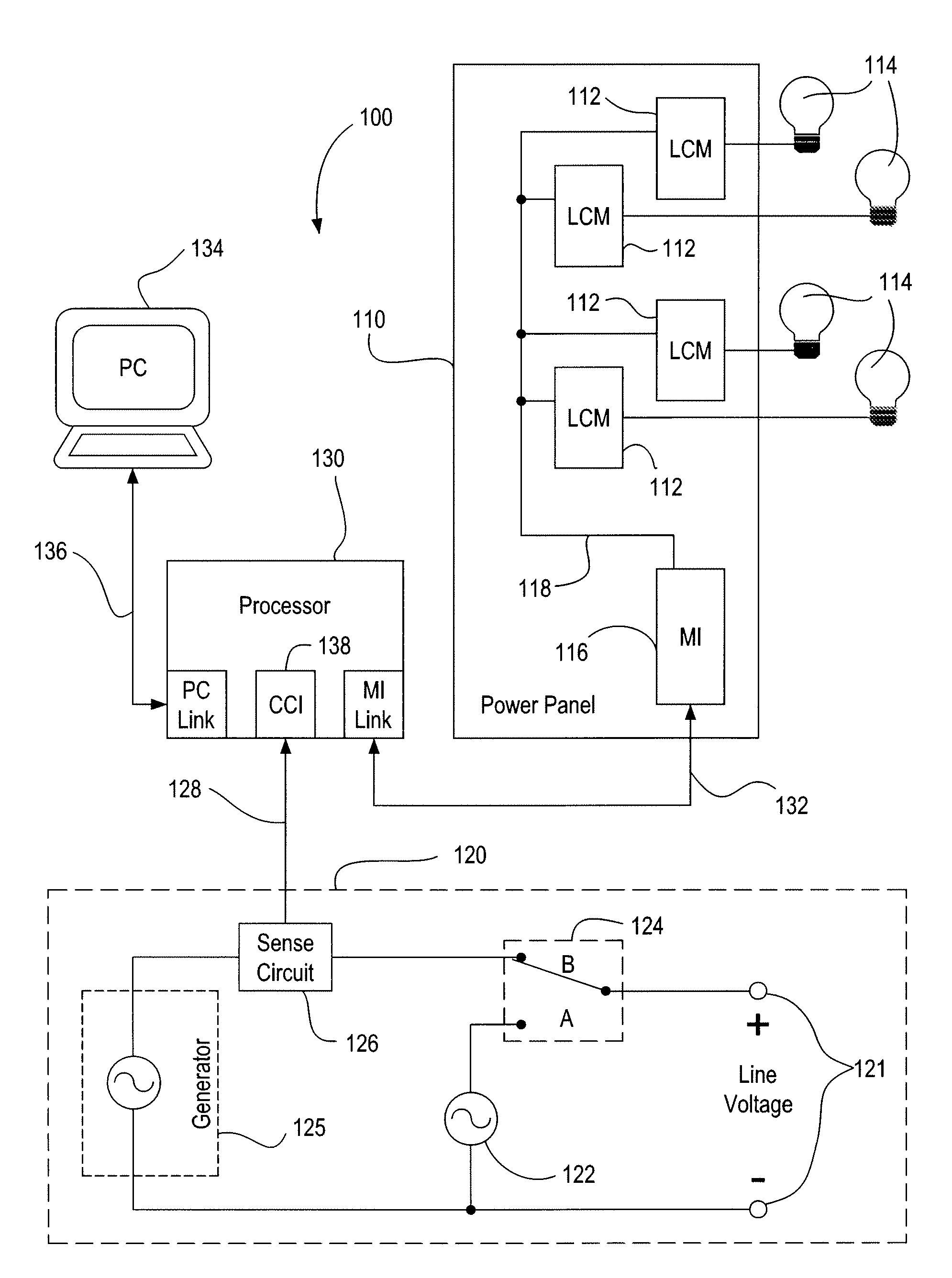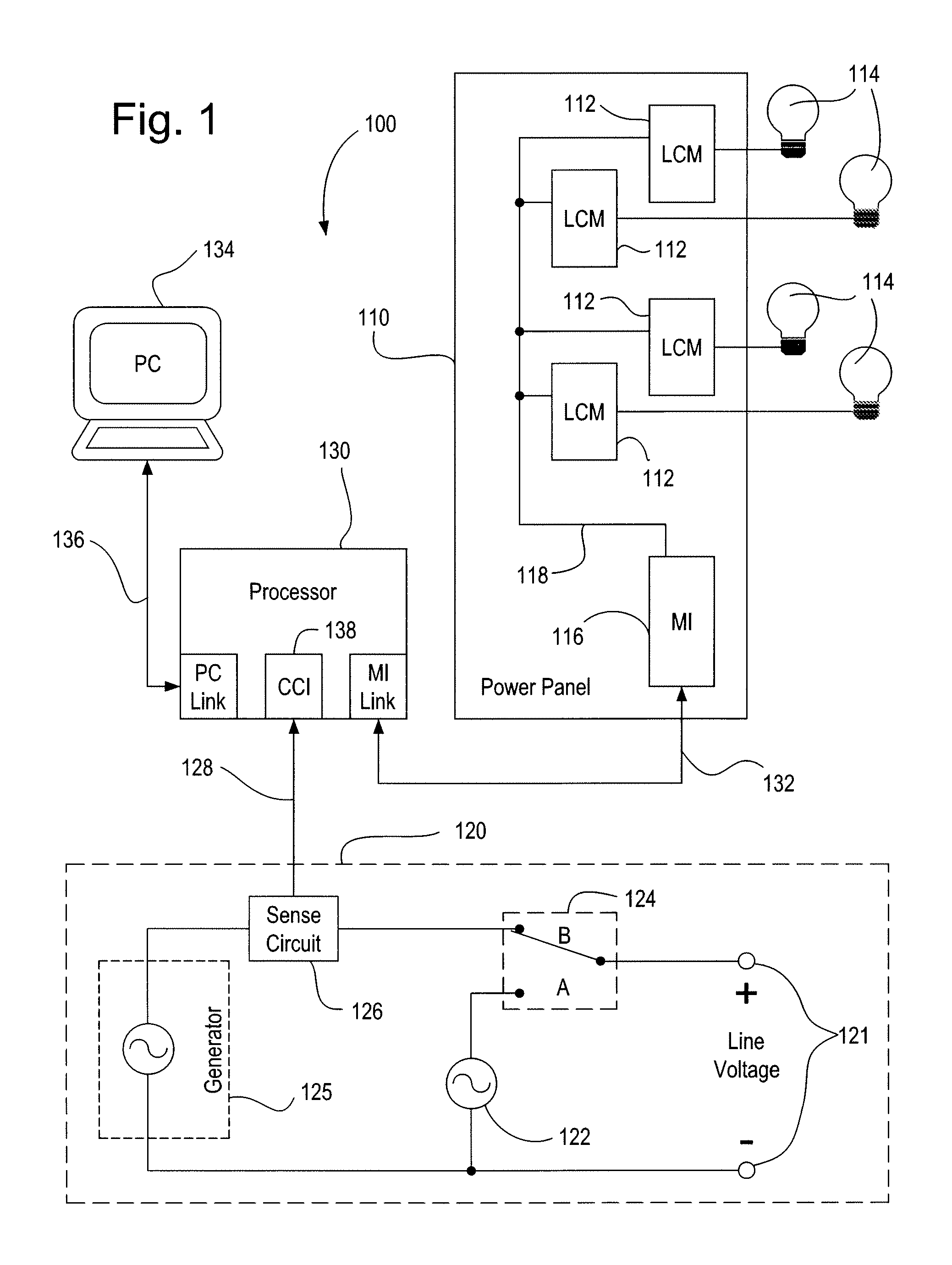Method of powering up a plurality of loads in sequence
a technology of powering up a plurality of loads in sequence, applied in the field of lighting control system, can solve the problems of power distribution system being susceptible to abnormal operation, power distribution system may have a limited peak power capability, and undesired response in the operation of loads
- Summary
- Abstract
- Description
- Claims
- Application Information
AI Technical Summary
Benefits of technology
Problems solved by technology
Method used
Image
Examples
first embodiment
[0031]FIG. 1 is a simplified block diagram of a centralized lighting control system 100 according to the present invention. The lighting control system comprises a power panel 110 having a plurality of load control modules (LCMs) 112 (i.e., a load control device). Each load control module 112 is coupled to a lighting load 114 for control of the amount of power delivered to the lighting load. Alternatively, each load control module 112 may be coupled to more than one lighting load 114, for example, four lighting loads, for individually controlling the amount of power delivered to each of the lighting loads. The power panel 110 also comprises a module interface (MI) 116, which controls the operation of the load control modules 112 via digital signals transmitted across a power module control link 118.
[0032]A power distribution system 120 provides an output voltage (i.e., a line voltage, such as 120 V, 60 Hz) to the load control modules 112 via two line voltage connections 121. While n...
second embodiment
[0064]FIG. 8A is a simplified block diagram of a lighting control system 800 according to the present invention. The lighting control system 800 includes three central processors 830A, 830B, 830C, which are all connected to an interprocessor communication link 840 to allow for the transmission of digital messages (i.e., digital signals) between the central processors. Only one of the central processors (i.e., the first central processor 830A) includes the CCI 138 for receipt of the contact closure output signal 128 from the sense circuit 126 of the power distribution system 120. Upon detecting that the contact closure output signal 128 has been asserted, the first central processor 830A transmits a digital message representative of the CCI event (i.e., a “CCI status message”) to the other central processors 830B, 830C via the interprocessor communication link 840. Thus, to begin the startup sequence, the second and third central processors 830B, 830C do not respond to the contact cl...
third embodiment
[0069]FIG. 9 is a simplified block diagram of a distributed lighting control system 900 according to the present invention. The distributed lighting control system 900 differs from the centralized lighting control system 100 (shown in FIG. 1) in that the distributed lighting control system 900 does not comprise a central processor. Further, the database defining the operation of the distributed lighting control system 900 is distributed (i.e., all or a portion of the database is stored) in each of the control devices of the distributed lighting control system.
[0070]The distributed lighting control system 900 comprises a plurality of load control modules 910, which control the lighting loads 114 and are coupled to a digital communication link 912. For example, the load control modules 910 may comprise a plurality of electronic ballasts controlling the amount of power delivered to a plurality of fluorescent lamps. Each of the load control modules 910 is coupled to the power distributi...
PUM
 Login to View More
Login to View More Abstract
Description
Claims
Application Information
 Login to View More
Login to View More - R&D
- Intellectual Property
- Life Sciences
- Materials
- Tech Scout
- Unparalleled Data Quality
- Higher Quality Content
- 60% Fewer Hallucinations
Browse by: Latest US Patents, China's latest patents, Technical Efficacy Thesaurus, Application Domain, Technology Topic, Popular Technical Reports.
© 2025 PatSnap. All rights reserved.Legal|Privacy policy|Modern Slavery Act Transparency Statement|Sitemap|About US| Contact US: help@patsnap.com



